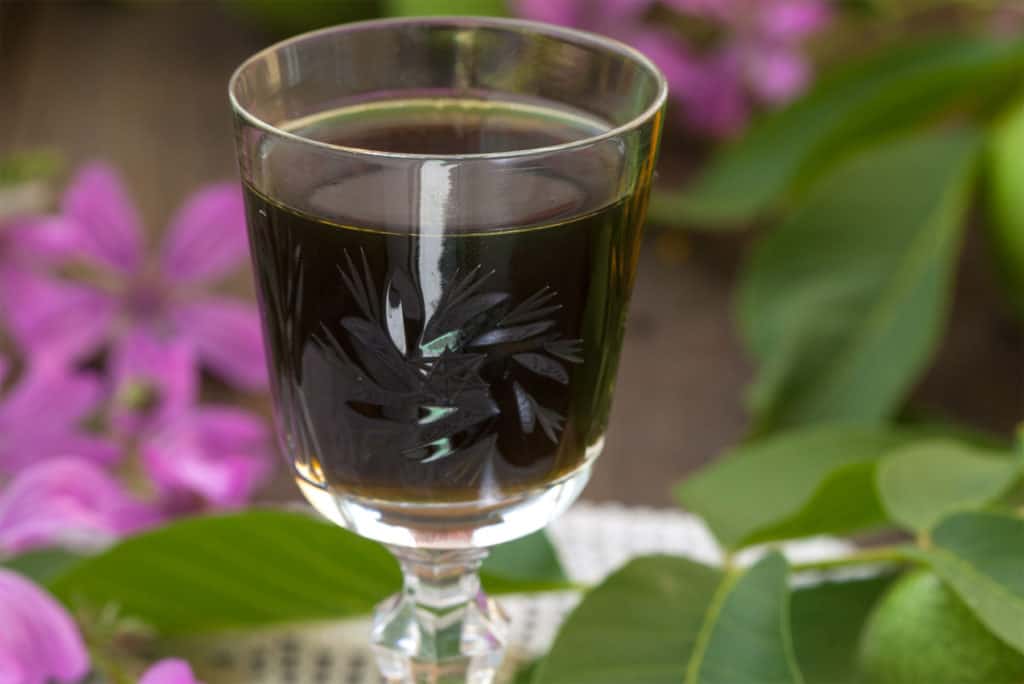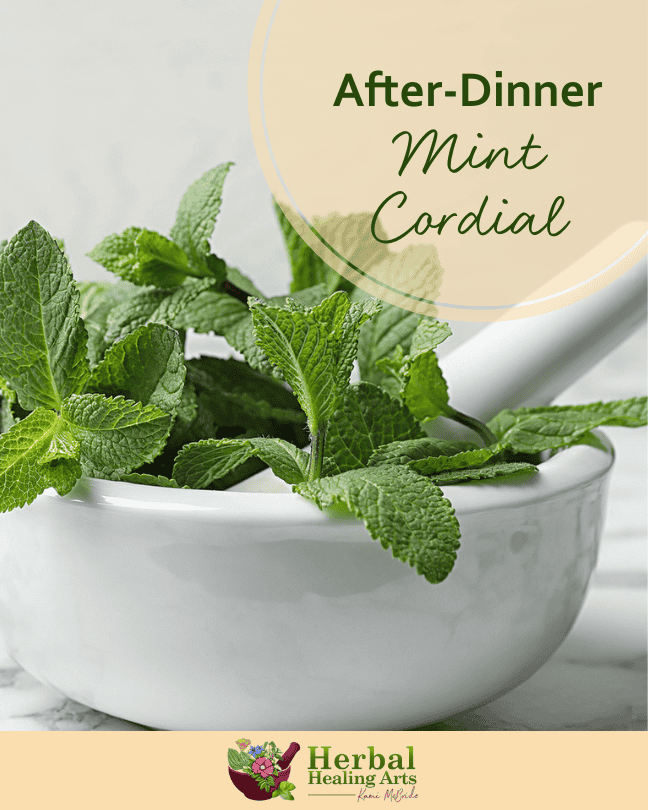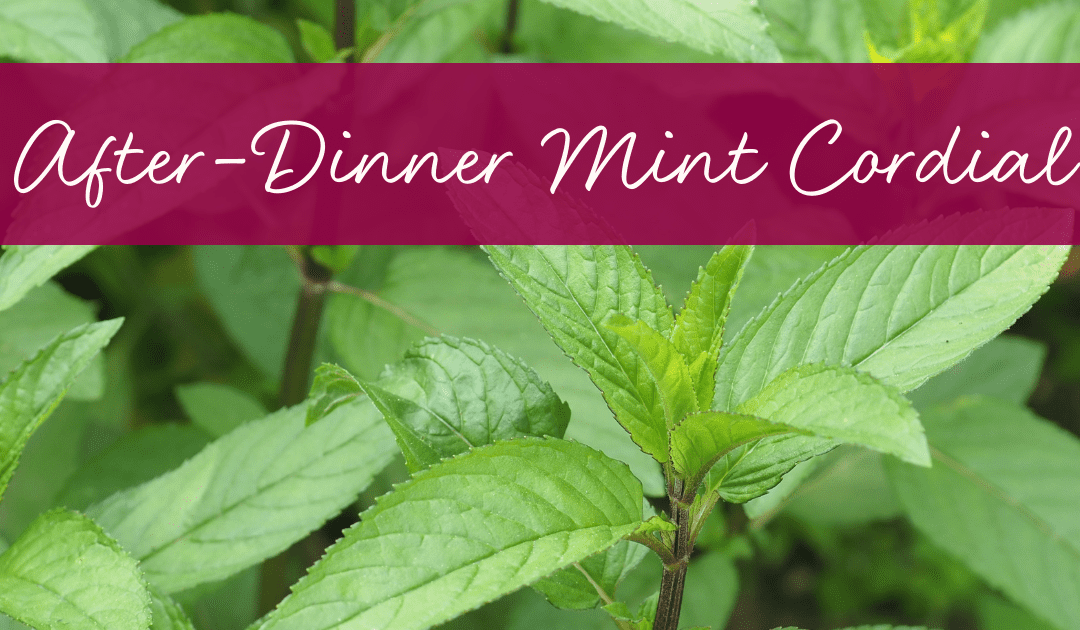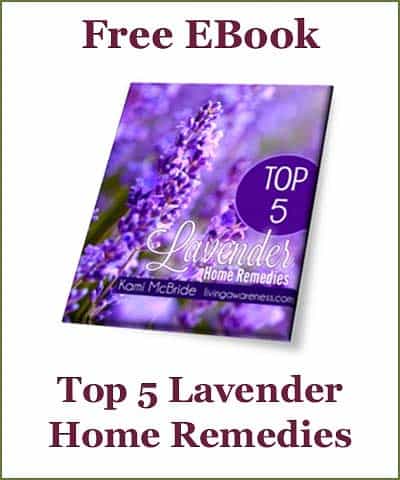Have you ever wondered why restaurants serve after-dinner mints? It is ancient herbal wisdom at your service. Peppermint aids in digestion, and a little mint candy, if there is really some peppermint in it, can do the job. Here’s something even better than mint candy: a delicious herbal mint cordial recipe!
What Is a Cordial?
Herbal cordials are alcoholic drinks that have a variety of uses, from preventing cold and flu to promoting sleep. They are often sipped before or after dinner to help with digestion.
Cordials can also be added to your cooking, from desserts and marinades to fruit dishes and drinks. They are perfect for toasts at special occasions, and to add that extra touch to seasonal feasts.
Herbal cordials are made with alcohol, herbs and spices, fruit, and a sweetener. Because they are high in alcohol, cordials are meant to be sipped in small quantities, such as a small 1/2 to 1 ounce glass.

Digestive Herbs
Sipping this mint cordial recipe after dinner can help you digest your food with more ease. Along with yummy nectarines, the recipe contains three digestive herbs: peppermint, lemon balm, and lavender.
Peppermint
Peppermint candies served after dinner are a remnant of herbal knowledge from a time when people used peppermint to settle the stomach after a heavy dinner. Peppermint (Mentha x piperita) is a carminative, which means that it helps to increase the flow of circulation and energy in the digestive tract.
Lemon Balm
Lemon balm (Melissa officinalis) is one of my favorite specialty drink herbs. Its distinctive lemon scent and pungent flavor add an evocative taste to drinks. This relaxing and mood-elevating herb can settle both your temper and your tummy.
Lavender
Many people are familiar with using lavender (Lavandula spp.) for relaxation, but it is also a great herb for digestion. Like peppermint and lemon balm, lavender is a valuable carminative herb that helps with gas, bloating, and indigestion.

How to Measure in Parts
This mint cordial recipe gives you a list of ingredients with the parts indicated so you can make the amount that suits you. You can choose how much one part is. One part can be 1 tablespoon or 1 cup. You get to decide how much mint cordial recipe you think you’ll partake in!
For example, let’s say you want your “part” to be 1 cup. One part would be 1 cup, and 2 parts would be 2 cups.
Whatever proportions you end up using, always make sure that the alcohol covers the ingredients by at least 2 inches. The fruit and herbs should not stick up above the alcohol.
After-Dinner Mint Cordial
Ingredients
- 2 parts fresh or dried nectarine slices
- 1 part chopped fresh or dried peppermint
- 1 part chopped fresh or dried lemon balm
- 1/2 part chopped fresh or dried lavender
- Cognac to cover by 2 inches
- Maple syrup to sweeten
Instructions
- Prepare your ingredients: crush dried herbs in a mortar and pestle as much as possible. If using dried fruit, finely chop the fruit with a knife. Fresh herbs and fruit should be chopped fine.
- Fill a clean glass jar with fresh or dried herbs and fruit according to the proportions above.
- Pour the alcohol over the herbs and fruit, filling the jar to the top.
- Put a lid on the jar, label the jar with the date and contents, store it in a dark place, and let the ingredients infuse for one month. Make sure your fruit and herbs stay covered with alcohol. Occasionally check to see if you need to add more alcohol, as some of it may have been soaked up by the plant material. This tends to be more of a problem with fresh ingredients than with dried. Especially check your mixture the first few days after making it. The alcohol should cover the ingredients by at least 2 inches.
- Place a funnel into the mouth of a clean, sterilized jar and lay muslin on top of the funnel.
- Carefully pour the alcohol through the muslin and funnel, letting the muslin catch the herbs and fruit, and being careful not to let them spill into the jar.
- Allow all the liquid to strain through the cloth into the jar. If you are using dried herbs or dried fruit, squeeze the rest of the liquid out of the dried plant material through the cloth into the jar. If you are using fresh fruit, do not squeeze the muslin, or you will end up with a cloudy extract. When making fresh fruit cordials, just let the liquid drip through the cloth.
- Discard the herbs and fruit. Add it to your compost or just put it on the dirt in your garden.
- Once you have decanted the herbs and fruit from the alcohol, you now have an herbal tincture that needs to be sweetened. The amount of maple syrup you put in is up to you. Traditionally, one-half part sweetener is added to one part tincture to make a cordial. Once you strain the herbs and fruit out, pour the liquid into a measuring cup to see how much you have. Divide that number in half, and that is the measurement for the sweetener.
- Plan on a shelf life of one year for fresh fruit cordials and a couple years for everything else.
Ready to seriously herbify your kitchen pantry? Check out My Herbal Kitchen
I would love to hear from you! Have you used peppermint or other herbs to help with digestion? Please share in the comments below.







I thought the mints were to freshen your breath. Maybe mint does both? This recipe sounds great and it’s on my list to try tomorrow! Thank you!
Just made a batch using more mint than lemon balm as my plant only had about half as much. Last summer I dehydrated nectarines and so they are part of this batch, too. Also some fresh lavender buds from the garden. Organic vodka will work its magic. Should be amazing later this spring! Also made a cordial from the mint tincture I made last May and forgot about. Local honey about half of the minty booze completed the cordial. First try will be tonight after a rich beef stroganoff dinner. Can’t wait to try this new concoction. Thanks for the… Read more »
Perfect time in my area of NH to pick mint and my Lemon Balm. Never added fruit so excited to try. Just ordered your kitchen book and look forward to making recipes. Will certainly make up and enjoy this cordial on the cooler weather of Fall coming up.